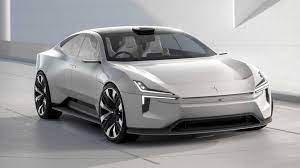
Breaking News
 FULL REPLAY: President Trump Delivers an Address to the Nation - 12/17/25
FULL REPLAY: President Trump Delivers an Address to the Nation - 12/17/25
 MELANIA, the film, exclusively in theaters worldwide on January 30th, 2026.
MELANIA, the film, exclusively in theaters worldwide on January 30th, 2026.
Top Tech News
 This tiny dev board is packed with features for ambitious makers
This tiny dev board is packed with features for ambitious makers
 Scientists Discover Gel to Regrow Tooth Enamel
Scientists Discover Gel to Regrow Tooth Enamel
 Vitamin C and Dandelion Root Killing Cancer Cells -- as Former CDC Director Calls for COVID-19...
Vitamin C and Dandelion Root Killing Cancer Cells -- as Former CDC Director Calls for COVID-19...
 Galactic Brain: US firm plans space-based data centers, power grid to challenge China
Galactic Brain: US firm plans space-based data centers, power grid to challenge China
 A microbial cleanup for glyphosate just earned a patent. Here's why that matters
A microbial cleanup for glyphosate just earned a patent. Here's why that matters
 Japan Breaks Internet Speed Record with 5 Million Times Faster Data Transfer
Japan Breaks Internet Speed Record with 5 Million Times Faster Data Transfer
 Advanced Propulsion Resources Part 1 of 2
Advanced Propulsion Resources Part 1 of 2
 PulsarFusion a forward-thinking UK aerospace company, is pushing the boundaries of space travel...
PulsarFusion a forward-thinking UK aerospace company, is pushing the boundaries of space travel...
 Dinky little laser box throws big-screen entertainment from inches away
Dinky little laser box throws big-screen entertainment from inches away
 'World's first' sodium-ion flashlight shines bright even at -40 ºF
'World's first' sodium-ion flashlight shines bright even at -40 ºF
Polestar Reveals Three-Year Business Plan, Will Turn Profit In 2025

Polestar has had an interesting past. Founded in 1996 to build entrants in the Swedish Touring Car Championship, Polestar eventually became Volvo's official performance partner in 2011. Volvo Cars, itself owned by the Chinese company Geely, fully acquired Polestar in 2015, spinning it off into its own brand that builds EVs and plug-in hybrids using existing Volvo platforms and powertrains.
Polestar's position as a former motorsports company turned tuning house doesn't really jive with its current product lineup, though. As nice as the Polestar 1 grand touring coupe and Polestar 2 five-door crossover are, they don't exactly tango with racing cars in terms of driving excitement. Adding to the young brand's identity crisis, Volvo announced that its entire lineup would be free of internal combustion by 2030. What's the point of an electrified car wearing relatively unknown branding, especially if its much more established corporate partner is also planning on a lineup consisting only of EVs?

 The Prime Directive is Evil
The Prime Directive is Evil
 Don't Worry About Bitcoin
Don't Worry About Bitcoin

